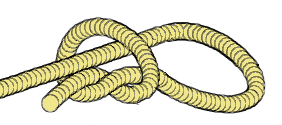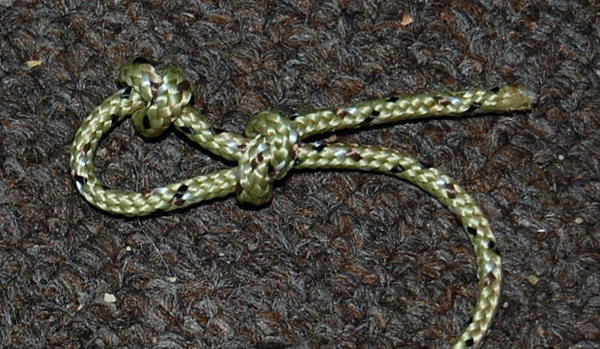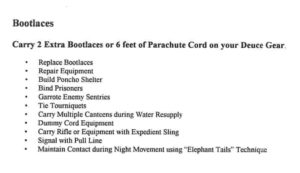When I was reading “Bushcraft 101” for its review, I came across a knot the author calls a “Jam Knot”.

According to various videos and websites, this is also known as the arbor knot or Canadian jam knot.
According to most of these sites, the knot is the greatest thing since Silvia Saint first took her clothes off.

I was currently in the process of updating my free book on knots, “Scrapboard Knots” I will admit, I was baffled.
Every depiction of this knot I have seen looks like a slip knot with an overhand tied in the running end.

Bushcraft 101 tells me: “The jam knot is a slipknot that, when used in conjunction with a stop knot, jams a loop of line to tighten around an object. This knot is easily released by pulling the tail on the stop knot portion of the line. This is one of the most useful knots for its adaptability.”
Which does not help. I cannot see how that overhand stop knot is contributing anything other than stopping the end of the rope fraying. The running end of a slip knot is subjected to very little force, all of it being applied to the loop and the eye.
You can use a jam knot to keep a sleeping bag rolled! You can use a slip knot for that too. I tend to use a killick hitch.
I am none the wiser as to what the big deal is! I feel like the little boy watching the naked emperor!: “It's a slip knot!”
It did get me thinking, however.
Suppose you tied a slip knot with an overhand stop knot within the bight?
You would have a noose that you could tighten but would not restrict under a certain diameter.

I call this the “Slip Knot with Stopper in the Bight”. Not the catchiest name, but describes exactly what it is!
I had my copy of Kephart handy, so I had a look at what he had to say about slip knots.
There I came across a knot he logically calls the “Fisherman's Eye” knot. It looks a little like the slip knot, but is structurally closer to a Fisherman's knot.

Kephart notes: “The strain is divided equally between the two knots, and the loop will stand until the line parts. This is one of the best ways to make an eye on a fishing line or gut”.

Unlike a slip knot, the first overhand is tied in the standing part (like the non-slip knot). The running end is passed through this knot. The running end is then tied around the standing part with a second overhand.
This creates a loop that may be reduced, but cannot be pulled wider than a certain diameter. In this respect, the fisherman's eye is the opposite of the the slip knot with stopper in the bight.
If I tie a slip knot and knot the running end around the standing part I get a sluggish slip knot.
The next step was obvious. Make a fisherman's eye with a stop knot tied in the bight.

I have not seen this variant anywhere else. The fisherman's eye seems to be relatively unknown itself.
I call the variant of the fisherman's eye with an additional stop knot the “three brothers”.
The three brother's knot gives you a fixed loop. There are lots of other knots that can do this, of course.
The three brothers has the merit that it easy to remember when you are too stressed to recall the finer points of a bowline, for example.
Incidentally, the Wikipedia illustration for the bowline is wrong. The running end should finish on the inside or the knot will be less secure.
The three brothers knot is also easy to adjust for size.

An alternate version of the three brothers may be tied by first tying a slip knot with a long running end. Tie a second overhand in the standing part behind the slip knot. Pass the running end through the second overhand, then tie the running end in an overhand around the standing part. Adjust the three overhands to get a loop of the desired size.

All of which raises the question: When is a knot new? Are these new knots, or just overhand knots in different configurations?
You saw them here first!

